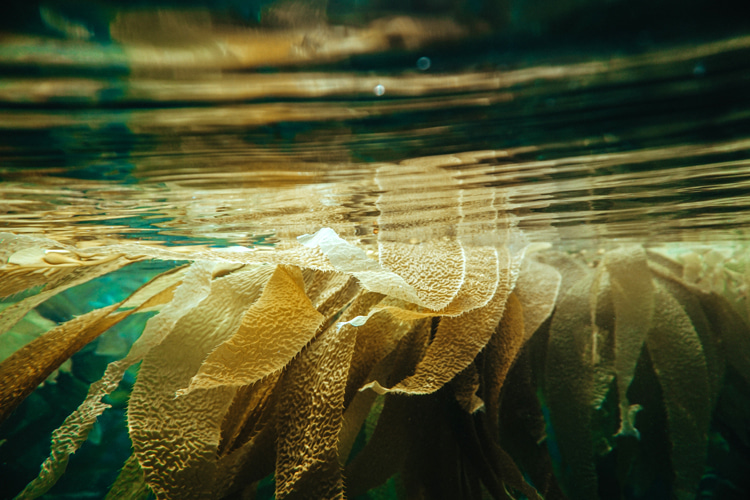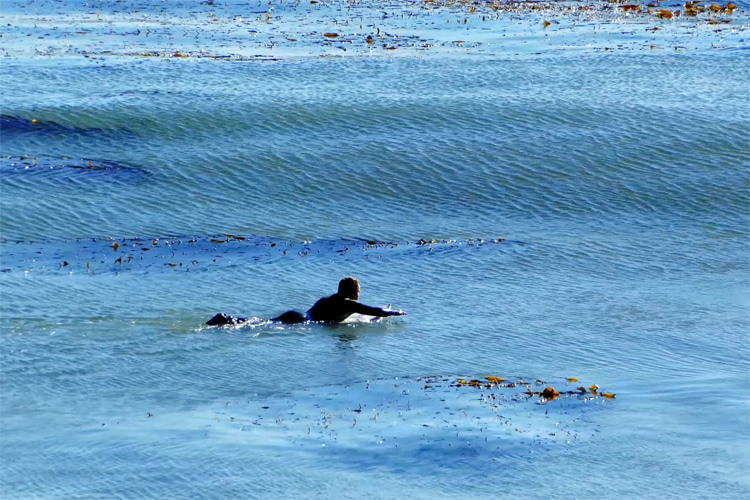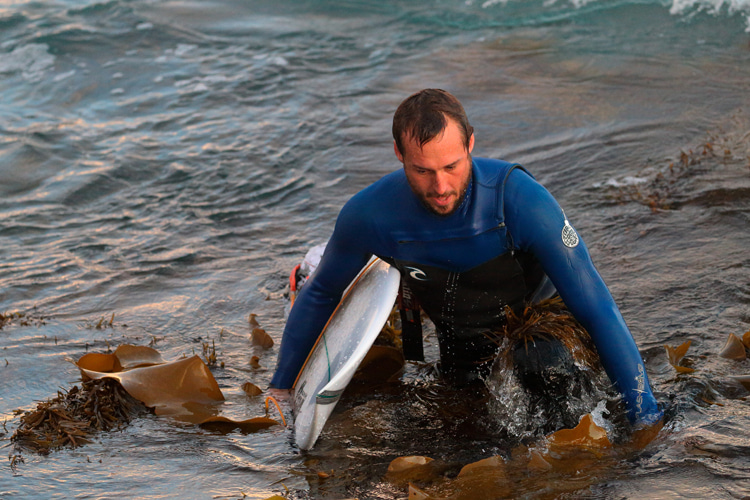I am an Atlantic Ocean surfer. In 30 years of surfing, most of the spots I visited, explored, discovered, and rode were beach breaks.
Probably over 95 percent of my surf sessions took place in those classic sand bottom seafloor lineups located in front of long beaches and dune systems.
Here and there, I find myself taking off near a breakwater or jetty and paddling for a perfect-peeling wave popping up over a small rocky area.
But that's not the norm - it's the exception.
Obviously, each one of us lives and rides waves in different locations across the world and has our own regular go-to spots.
Essentially, there are three main types of surf breaks: beach breaks, reef breaks, and point breaks.
Depending on the tide, swell, wind, bathymetry, and geographic coordinates, a beach break could, for instance, morph into a point break.
Also, a reef break could technically be considered a point break in cases where the take-off zone is always evident and immutable.
You could be surfing on a long urban beach - with multiple sandbanks that shift with the seasons - bordered on one side with a breakwater.
In this example, a subtle change in the swell window could transform the lineup near the human-made structure into a dreamy point break.
So, if you're an active wave rider, you know what to expect and where to go on a particular day or during summer or winter.
Most of the world's surfing community rides these three different types of breaks. But could there be anything that doesn't fit into these categories?
Maybe.

Algae Beds
The experience I'd like to share is odd and slightly bizarre. In three decades of surfing, I never imagined it could actually occur or even exist.
It was just another Saturday morning.
I got up, had my religious breakfast - orange juice, buttered toast, and espresso - checked the swell and wind conditions, and waited for the best tide time to drive to the spot.
I can't say I have a single home break. I probably have two, three, or four surf spots I particularly enjoy, know well, and call home breaks.
The one I chose for this late summer session has been on my priority list for a few years. Although it is 12 miles (20 kilometers) from home, it is generally worth the drive.
Why? Mainly because I no longer have patience for crowded lineups, battles for priority, and everything that comes with these environments.
So, I am one of those who are willing to sacrifice a bit of wave quality for uncrowded or even empty surf breaks.
I know you know what I mean. And you might probably be on my team, too.
The waves are often pretty good at this particular surf spot, so I always get an above-average wave count - never less than 12-20 waves in a 60-minute session.
Anyway, I got to the spot. A few good-looking two-to-three-foot waves were breaking, unridden, and waiting for me.
The wind conditions were perfect, something that is often rare in Atlantic surf breaks. And when I say perfect, I mean windless.
So, I put on my leash, entered abnormally warm water, and started paddling out to the take-off zone.
The first thing I noticed was the vast beds of thick kelp floating a few inches below the water's surface.
"Well, it's not the first time I see and experience this, and it certainly won't be the last," I thought to myself.
Right.
The Kelp-Made Wave
These large brown algae seaweeds were not fully covering the lineup, though. Despite being dense and making paddling difficult, they were only occupying a specific area.
My arms, fins, and leash got easily entangled in it.
It wasn't impossible to move around, but I eventually decided to paddle toward a more clean area.
Suddenly, through the corner of my left eye, I noticed something weird taking place in the kelp-infested zone I had just left.
A perfect A-frame wave was popping up above the kelp beds, even though no wave set had arrived.
"It is certainly a one-off wave," I told my rational part of the brain.
A few seconds again, another beautiful glassy gem emerged from that kelp forest. What is going on here?
My detective side forced me to investigate, and so I got closer.
Apparently, short bursts of wave energy were hitting the kelp bank and creating a wave out of nothing in a way similar to reef breaks.
But could I take off over that high density of algae? There's nothing like experimentation - trial and error.
The worst thing that could happen was wiping out over a fluffy blanket of algae.
Furthermore, kelp is seldom a sign of clean, purified water, and the health benefits of seaweed are well known.
No worries, then.

Navigating Through Brown Blades
On my first attempt, I struggled to get enough paddling power. At each stroke, my arms were trapped by the thick and undulating kelp blades.
But because I was on a funboard, I managed to catch the wave.
The second challenge was navigating through the brownish wave face and finding a relatively safe line for my thruster setup.
I also made it. My fins found enough water to keep going and did not catapult me into... the kelp bed.
I definitely wasn't sleepy, so I took the most out of the experience.
I guess I may have ridden half a dozen waves on my newly-discovered kelp break. Not bad for a debut.
In the end, I felt I had learned something new. And that is one of the greatest things about surfing.
Moreover, I had a story to share with my dear, like-minded readers.
The more we surf, the more we pay attention, absorb, and assimilated details that would probably pass unnoticed by a beginner.
I would never imagine that I would come across a stunning wave created by a forest of kelp on just another Saturday morning.
This is the beauty of the ocean and Nature. They're always in charge and always dictate the way we enjoy and celebrate life.
Words by Luís MP | Founder of SurferToday.com
